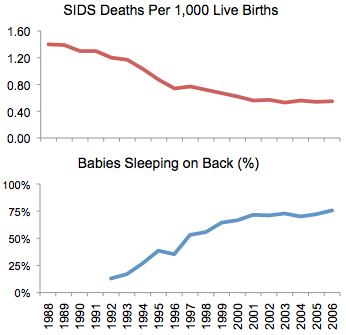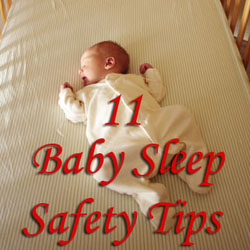 Back To Sleep is a public education campaign started in 1994 to combat the incidence of Sudden Infant Death Syndrome (SIDS). The central recommendation, the one for which the campaign was named, was that babies be put on their backs to sleep (not their stomach or side). This has been proven to reduce the risk of SIDS. Since the campaign began, SIDS death rates have dropped by 50% (see figure).
Back To Sleep is a public education campaign started in 1994 to combat the incidence of Sudden Infant Death Syndrome (SIDS). The central recommendation, the one for which the campaign was named, was that babies be put on their backs to sleep (not their stomach or side). This has been proven to reduce the risk of SIDS. Since the campaign began, SIDS death rates have dropped by 50% (see figure).
Sleep Safety Guidelines
In late 2011, the American Academy of Pediatrics (AAP) released updated guidelines for promoting safe sleep for babies. These are recommendations made by pediatricians to reduce the risk of SIDS. Though their list is extensive (and backed up with a lot of research), I’ve boiled it down to the essential baby sleep safety tips.
Put your baby on his or her back to sleep every time
Infants should be placed in a “supine” position — completely on their backs — to sleep. This should be done every time the baby goes to bed (including naps) and continued until 1 year of age.
Some parents worry that doing so increases the risk of choking, but this is not the case. Babies have protective airway mechanisms to prevent this. Even with babies that have reflux should be put on their backs to sleep.
Use a firm [flat] sleep surface
Ideally, a firm mattress covered by a fitted sheet. The AAP recommends that a crib conforming to ASTM safety standards be used. Check to make sure that your crib or mattress hasn’t been recalled. The mattress should be sized to fit your baby’s crib (see our list of the best baby crib mattresses). Importantly, don’t put your baby in a crib with missing parts, and don’t try to fix a broken crib yourself.
Also, make sure the crib or bassinet is placed in a safe location, away from electrical cords, mini-blind cords, etc. (see our article on 5 dangers near your baby’s crib). Sitting devices, such as car seats, strollers, and swings, are not recommended for routine sleep. This is especially important for babies younger than 4 months of age, as partially-upright positions might cause their airway to become obstructed.
Sleep in the same room, but not the same bed, as your baby
Under no circumstances should your baby sleep in bed with you. Doing so exploses them to lots of suffocation and strangulation hazards, including pillows, loose blankets, sheets, and the bodies of the parents. This is a real danger. Also, it’s recommended that the mini crib or bassinet be put in the parents’ room near their bed so that they can monitor and comfort the baby overnight. There are now baby monitors that detect sound and movement to help you monitor your infant when you’re out of the room.
Keep soft objects and loose bedding out of the crib
Your baby’s bed should have three things in it: a mattress, a fitted sheet, and the baby. No pillows, no soft cushy toys, no sheepskins, no loose bedding of any kind. It’s OK to swaddle or put him in a baby sleep sack, but loose blankets are not recommended. Crib bumpers and bumper pads should not be used. These increase the risk of suffocation, entrapment, and strangulation. Don’t worry that your baby will injure himself on the bars of the crib – he won’t. Throw those bumpers away.
Offer a pacifier at nap time and bedtimeThough the mechanism is unclear, the use of a pacifier is associated with reduced risk of SIDS. My personal suggestion is to keep two or three of your best baby pacifiers in the crib so that you can find one when you need it, even in the dark. The AAP says that you should put it in when you put the baby to bed, but you don’t need to re-insert it if the pacifier falls out while your baby is asleep; the protective effect continues even if the pacifier isn’t in the infant’s mouth. For breastfed babies, the pacifier should not be introduced until 3-4 weeks of age to avoid nipple confusion. |
 Soothie Baby Pacifier |
Avoid Overheating the Baby
Your infant should be dressed appropriately for the environment, with no more than 1 layer of clothing on than an adult would wear comfortably. Check your baby for signs of overheating — perspiration or feeling hot to the touch — and address them immediately, even if the baby’s asleep. See also our guide to what a newborn should sleep in.
Breastfeed your babyThe AAP recommends that you breastfeed your baby, feeding only breast milk (directly or expressed) until 6 months of age. There is a protective effect against SIDS for breastfed babies. Exclusive breastfeeding is best, but some breastfeeding is better than none at all. If you’re having trouble, consider a quality breast pump so that you can store and feed expressed milk. |
 Medela Breast Pump |
Do not use home breathing/heart rate monitors
This one surprised me. The AAP recommends against using home cardiorespiratory monitors, the kind that detect apnea (pauses in breathing while sleeping), brachycardia (heart rate drops) and/or blood hemoglobin oxygenation. There is no evidence that these decrease the incidence of SIDS. While there may be some values for certain infants (preemies?), monitors should not be used routinely.
I did not see any specific recommendations against using a baby movement monitor like the Snuza Halo. See our review article for some good options.
You may have seen baby sleep positioners, crib ramps, or other products claiming to reduce the risk of SIDS. The AAP found no evidence that these were effective and recommends against them. For more, see my post on the myth of baby sleep positioners.
Pregnant women should receive regular prenatal care
According to the AAP, there is “substantial evidence” that women who have prenatal care are less likely to have a baby that dies from SIDS.
Avoid smoke exposure during pregnancy and after birth
Smoking should absolutely be avoided by the mother, during pregnancy and after birth. Also, you should minimize your baby’s exposure to smoke from other people, including relatives and friends. Smoke lingers in hair and clothing; people who smoke should generally not be near (and certainly not holding) your baby. Also, smoking combined with co-sleeping creates a high risk for SIDS.
It’s just selfish to smoke around a baby.
Avoid alcohol and illicit drug use during pregnancy and after birth
Alcohol taken during pregnancy endangers a fetus. You should know this already. After birth, alcohol should be avoided because it impairs your judgment and dexterity, which could prevent you from caring for your infant. Alcohol and/or drug use in combination with co-sleeping creates a particularly high risk for SIDS.
My question to the AAP: shouldn’t illicit drug use be avoided at ALL times?
What To Read Next
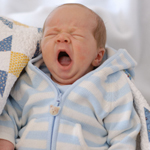 |
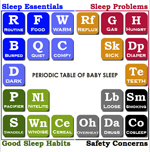 |
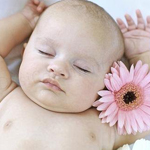 |
 |
| Baby sleep problems takes you through the most common sleep issues and how to address them. | The periodic table of baby sleep has all the essential elements for healthy baby sleep habits. | Visit our sleep training section for strategies and tips for teaching your baby to sleep through the night. | Check out our reviews of Essential baby gear for helping babies sleep at night. |
